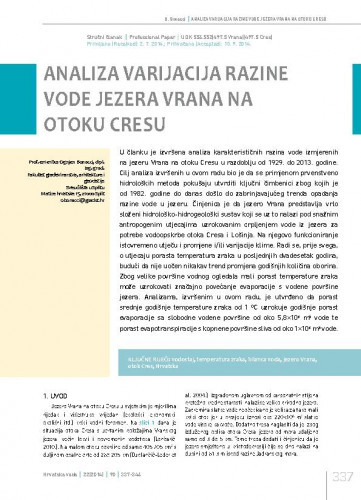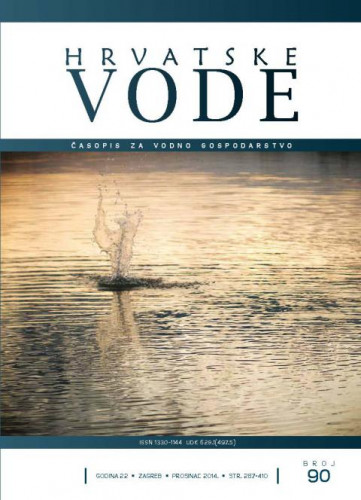U članku je izvršena analiza karakterističnih razina vode izmjerenih na jezeru Vrana na otoku Cresu u razdoblju od 1929. do 2013. godine. Cilj analiza izvršenih u ovom radu bio je da se primjenom prvenstveno hidroloških metoda pokušaju utvrditi ključni čimbenici zbog kojih je od 1982. godine do danas došlo do zabrinjavajućeg trenda opadanja razine vode u jezeru. Činjenica je da jezero Vrana predstavlja vrlo složeni hidrološko-hidrogeološki sustav koji se uz to nalazi pod snažnim antropogenim utjecajima uzrokovanim crpljenjem vode iz jezera za potrebe vodoopskrbe otoka Cresa i Lošinja. Na njegovo funkcioniranje istovremeno utječu i promjene i/ili varijacije klime. Radi se, prije svega, o utjecaju porasta temperatura zraka u posljednjih dvadesetak godina, budući da nije uočen nikakav trend promjena godišnjih količina oborina. Zbog velike površine vodnog ogledala mali porast temperature zraka može uzrokovati značajno povećanje evaporacije s vodene površine jezera. Analizama, izvršenim u ovom radu, je utvrđeno da porast srednje godišnje temperature zraka od 1 ºC uzrokuje godišnje porast evaporacije sa slobodne vodene površine od oko 5,8×106 m3 vode te porast evapotranspiracije s kopnene površine sliva od oko 1×106 m3 vode..; The paper analzes characteristic water levels measured in the Vrana Lake on the Cres Island in the period from 1929 to 2013. The objective of the analyses carried out in this period was an attempt, by application of primarily hydrological methods, to determine the key factors which caused the concerning trend of decrease of water levels in the lake since 1982. The Vrana Lake is a very complex hydrological and hydrogeological system, which is also under strong anthropogenic influences due to water pumping from the lake for water supply of the islands Cres and Lošinj. Additonally, its functioning is impacted by climate changes/variations. This is mostly related to the impact of increase in air temperatures in the past two decades, since no trend of changed annual precipitation quantities was recorded. Due to the large surface of the water mirror, a slight increase in air temperature can cause significant increase of evapotranspiration from the water surface of the lake. Through analyses conducted in this paper, it was determined that increase in the mean annual air temperature of 1 ºC causes annual increase in evapotranspiration from the free water surface of about 5.8×106 m3 of water, and increase of evapotranspiration from the land surface of the basin of about 1×106 m3 water.
Sažetak
Dio sveska

